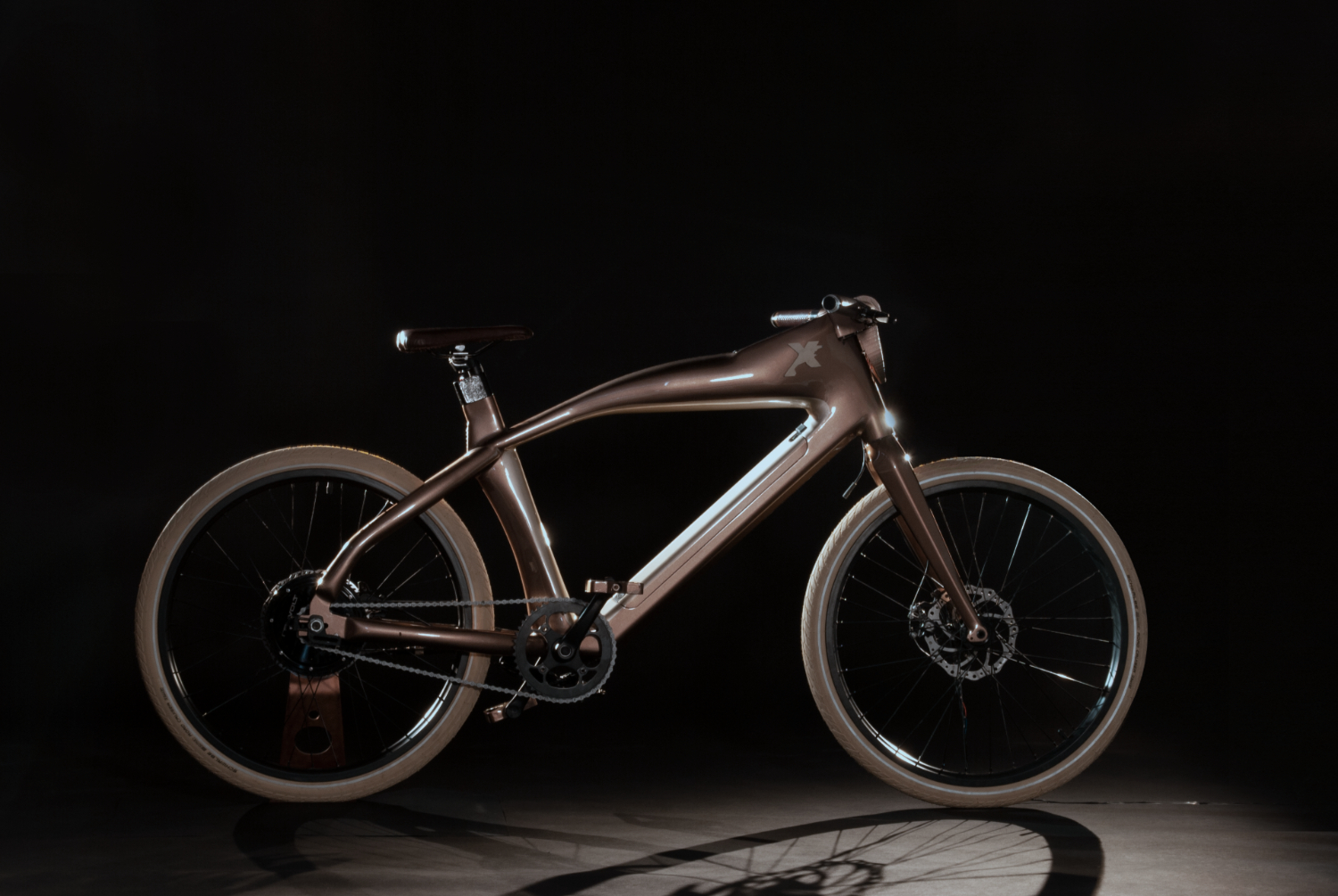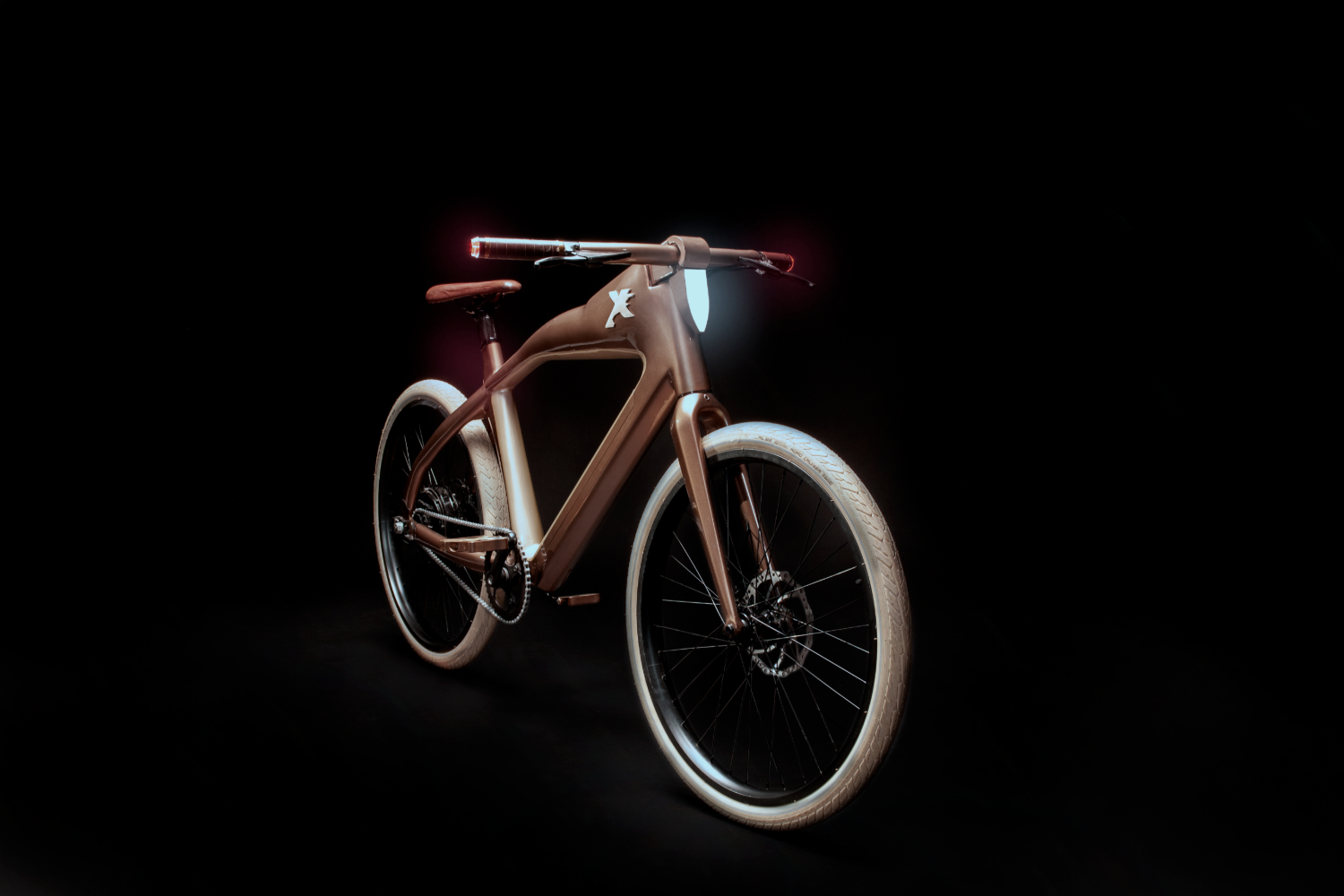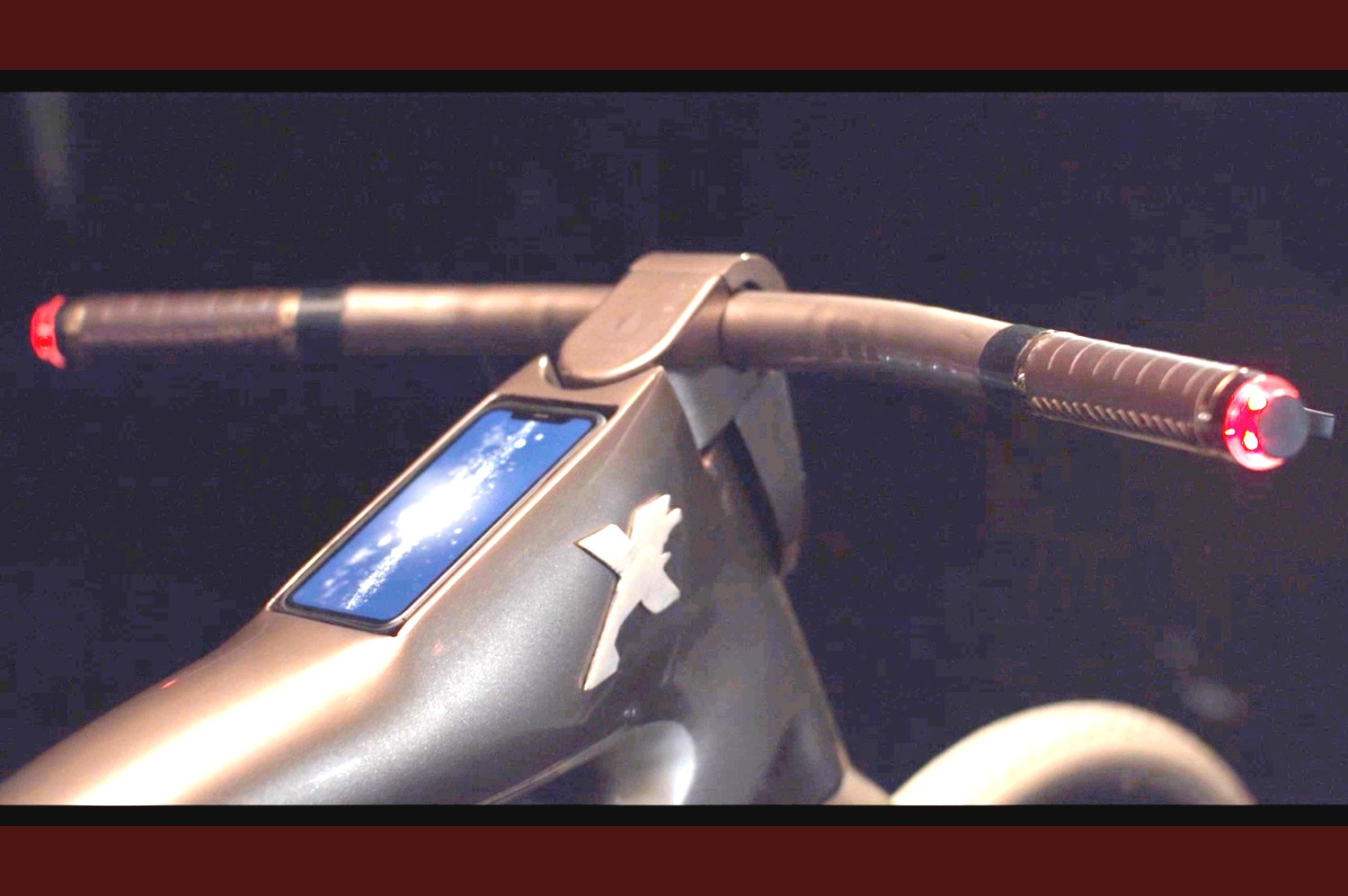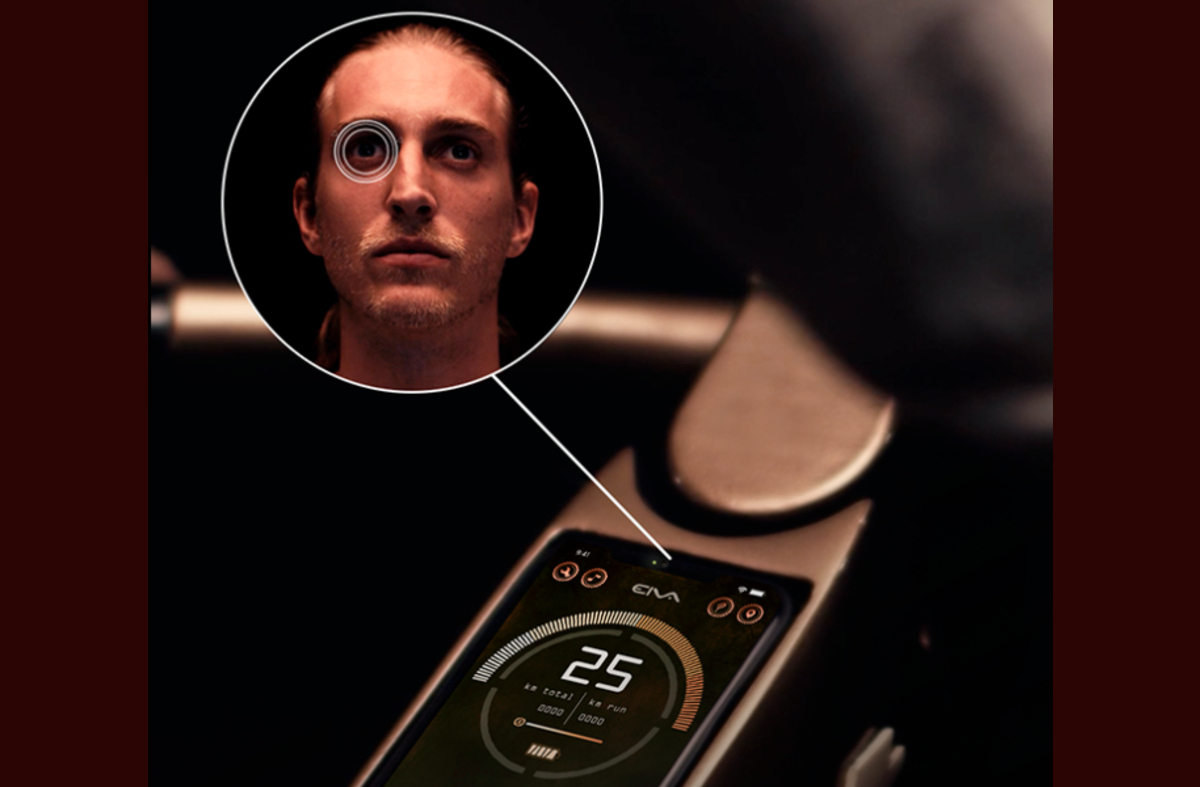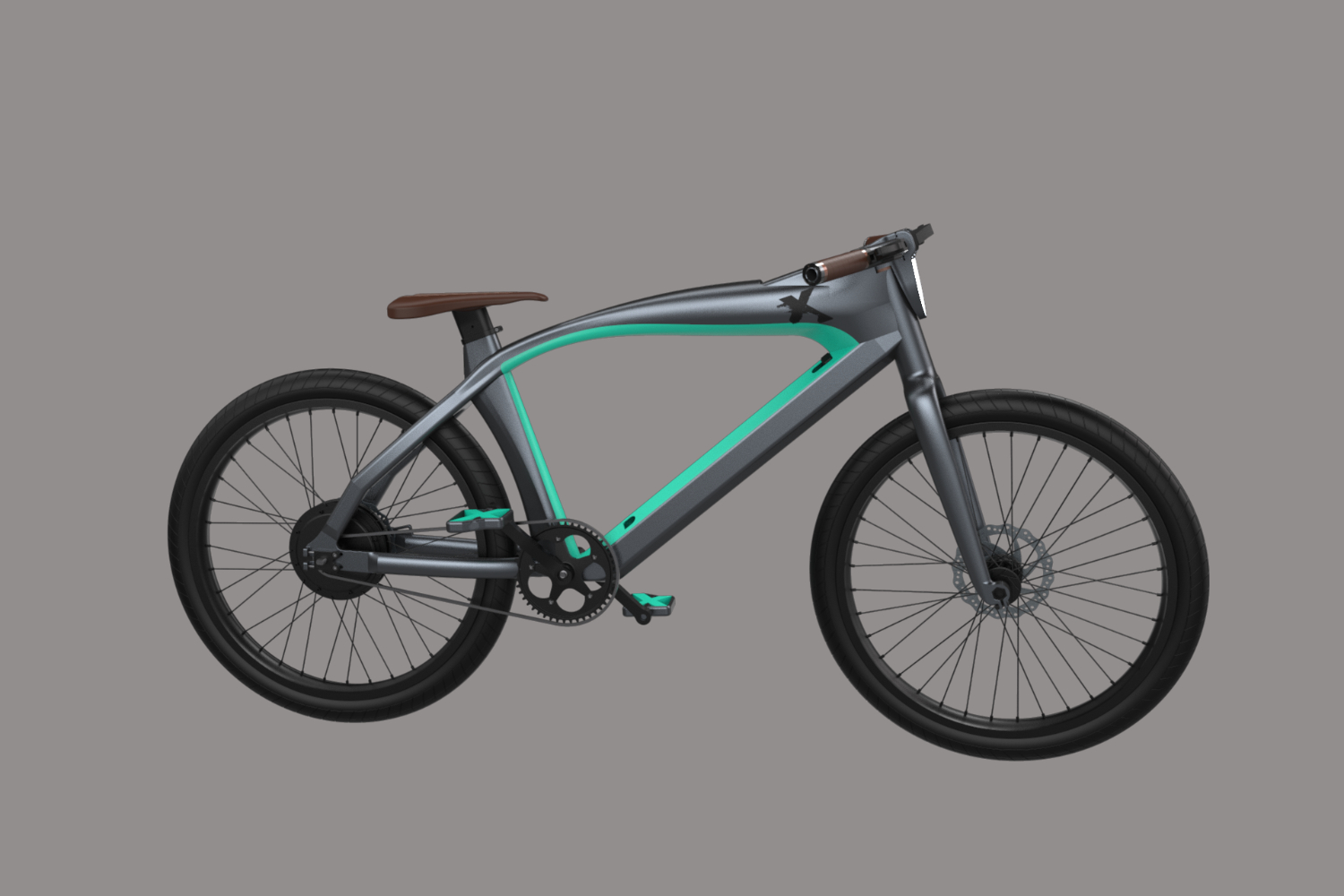E-bike styles run the gamut from utilitarian to highly engineered performance bikes for track or mountain trails. Rayvolt’s X One e-bike, currently in an Indiegogo crowdfunding campaign, combines futuristic design and new technologies in a highly stylized ride.
The X One isn’t Rayvolt’s first spin of an electric-powered bicycle wheel. Rayvolt’s retro e-bike lineup includes models reminiscent of century-old Indian and Harley-Davidson motorcycles and beach cruisers. Rayvolt e-bikes also feature regenerative braking, integrated GPS with mapping features, and a virtual assistant for operation control and diagnostics. Current Rayvolt e-bikes range in price from $2,199 to $3,999 depending on the model and power configuration.
The X One also will be available in different power grades and colors. Top speed, according to Rayvolt, will range from 15.5 to 28 miles per hour depending on the motor and the maximum range will range from 31 to 46 miles depending on battery size. The X One uses a torque sensor to control pedal assist power. The X One Power model has a throttle, but the Smart and Smart + do not.
Technology common to all X One variants includes an Android-powered touchscreen with owner facial recognition to unlock the bike. Owners will be able to arrange all settings for the bike on the touchscreen.
The X One has an aluminum composite frame with a carbon fiber fork, which Rayvolt claims keeps the weight to just 48 pounds.
An integrated gyrosensor engages battery power regeneration when the bike runs downhill. This action is somewhat similar to the concept of engine braking while coasting with an internal combustion engine vehicle, except rather than only slowing the vehicle, the regen system puts a bit of power back in the battery. The X One also has patented backpedal proportional regeneration, so the rider can pedal backward to recharge and slow progress.
LED lights integrated into the frame and handlebar grips include a headlight, tail lights, rear brake light, and turn signals. The headlight and tail lights use ambient light sensors to turn on and as needed. The turn signals operate kinetically, turning on and flashing as you begin to turn — you can also turn them on and off manually.
The X One will be available in four colors: Original Copper, Urban Grey, Devil Black, or Neon Graphene.
The X One Smart, a Class 2 e-bike with a 250-watt electric motor and 42V 10.5Ah battery will list for $3,999. For $4,199, you will be able to buy the X One Smart +, with a 16Ah battery for greater range. The most powerful variant, the X One Power, a Class 3 e-bike, will run with a 750-watt motor and 16Ah battery for $4,399.
Rayvolt is an established e-bike manufacturer, which is reassuring with crowdfunding campaigns for big ticket items. According to the Rayvolt, the X One prototype is ready and the Indiegogo campaign purpose is to validate interest with a minimum order quantity with component suppliers, after which ramping up production quantities will be easy.
With 54 days to go in the Indiegogo campaign, supporters have pledged $101,921 or 203% of the campaign’s $50,000 fixed goal. Supporters can make pledges for X One Smart, Smart +, and Power e-bike perks for 50% off the eventual list price. The pledge for the X One Smart perk is $1,999, the X One Smart + is $2,099, and the X One Power perk pledge is $2,199. Rayvolt said the perk rewards should start shipping in June 2020.
Editors' Recommendations
- You’ll have to imagine how fun the new OnePlus Nord 2 x Pac-Man phone looks
- Asus pairs the portable ROG Flow X13 2-in-1 with a miniature XG Mobile eGPU
- Microsoft discontinues the Xbox One X, Xbox One S All-Digital Edition
- Xbox Series X’s Smart Delivery lets Xbox One owners upgrade games for free
- Bosch Kiox and SmartphoneHub hands-on: The sleek displays e-bikes deserve

